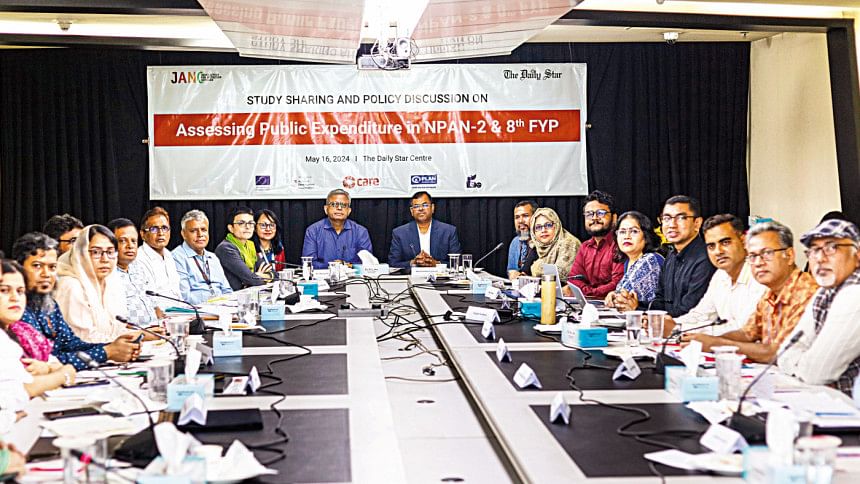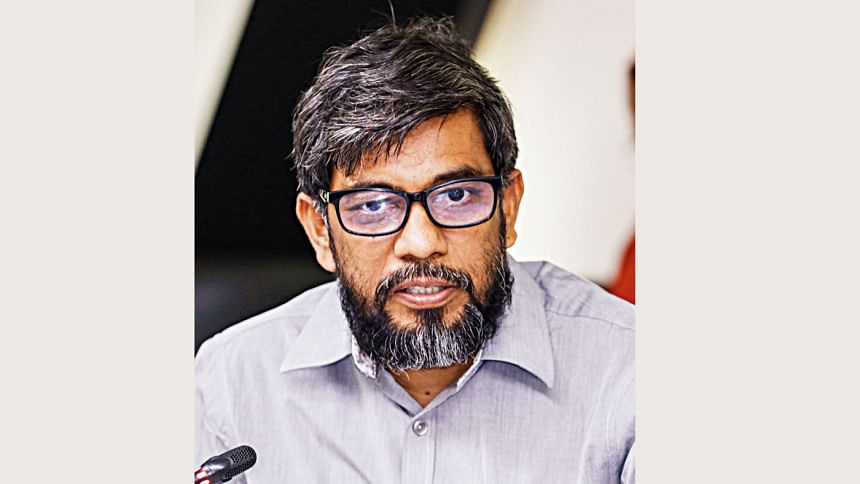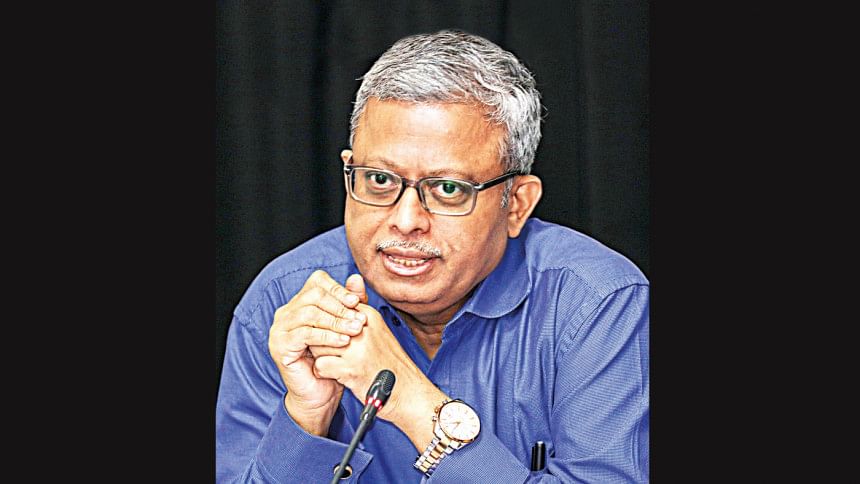Bridging the nutrition gap

Joint Action for Nutrition Outcome (JANO) project, implemented by CARE Bangladesh, in association with The Daily Star organized a roundtable, titled "Assessing Public Expenditure in NPAN-2 & 8th FYP" on May 16, 2024. Here we publish a summary of the discussion.

Dr Ikhtiar Uddin Khandaker, Deputy Country Director-Program (Acting) CARE Bangladesh
This study, commissioned by CARE, provides an opportunity to examine how public expenditure is being used for nutrition. The JANO project, a consortium with Plan International and ESDO, funded by the European Union and Austrian Development Cooperation, is implemented directly in Nilphamari and Rangpur districts and indirectly in seven sub-districts. The project focuses on nutrition governance and the rollout of the second National Plan of Action for Nutrition (NPAN-2).
The modifications in the multi-sectoral approach applied through the current structure are some noteworthy changes. For example, the District Nutrition Coordination Committee and the Upazila Nutrition Coordination Committee, established by the government, ensure multi-sectoral engagement by involving different ministries at the district and sub-district levels. These committees follow the second national plan of action, guided by the Bangladesh National Nutrition Council. We aim to identify future directions, including the upcoming third national plan of action and the eighth five-year plan, through this process.

Dr Sayema Haque Bidisha, Professor, Department of Economics, University of Dhaka, and Research Director, SANEM
A group of young researchers at South Asian Network on Economic Modeling (SANEM), along with myself, worked on a report on NPAN-2 and the JANO project. Our study aims to analyse investment patterns, identify financial gaps, and pinpoint challenges in health financing and NPAN-2 implementation, focusing on the project.
The government has tried to address these challenges through planning documents, notably NPAN-2 (National Plan of Action for Nutrition 2016-2025). The JANO project, within the framework of NPAN-2, proposes a different type of planning based on local-level planning involving the Union Development Coordination Committee (UDCC), Upazila Nutrition Coordination Committee (UNCC), and District Nutrition Coordination Committee (DNCC). The aim is to enhance community involvement and supplement central budgeting and planning.
The Bangladesh National Nutrition Council (BNNC) plays a crucial role in monitoring, evaluation, and policy guidance for the 3M (multisectoral, multistakeholder, and multi-level) strategy in NPAN-2, requiring competent human resources and consistent budget support. Our study observed that the 3M approach applied in the Nilphamari and Rangpur regions saw an overall improvement in nutrition-related budgets in areas under these core ministries, UNCC, UDCC, and other aspects. Extending the 3M approach to other contexts would lead to better outcomes.
However, the allocated budget is inadequate compared to global standards, likely needing to triple to align with best practices. Data shows that only seven of the Ministry of Health and Family Welfare projects align with NPAN-2, and the nutrition budget allocation is very small. Additionally, the implementation rate is low, with 71 percent of the allocated budget utilised.
Of 21 nutrition-related projects under the Ministry of Food, 12 have been completed, one is ongoing, and eight show no progress. Out of the nine Ministry of Agriculture projects, two are completed, five are ongoing, and two show no progress. Nutritional budgetary allocation for these important ministries is only around 2.2 crore.
The Ministry of Local Government, Rural Development, and Cooperatives has 76 projects, with 31 completed, 29 showing no progress, and 16 ongoing. The Ministry of Women and Children Affairs (MOWCA) and the Ministry of Education also have nutrition-aligned projects, although their allocation is not very high. The Ministry of Fisheries and Livestock has an impressive record, but data shows less than 50 percent utilisation in some ministries, such as the Ministry of Education and the Ministry of LGRD.
Comparing Bangladesh's nutrition profile, financial allocation, budgeting, and socio-economic status with countries like India, Nepal, Lao PDR, and Indonesia is essential to understand the current situation. Lao PDR spends significantly on nutrition-related activities. India has targeted programmes, such as the malnutrition-free initiative, covering 12 ministries and 4.8 lakh joint activities, while Nepal follows a need-based approach. Stunting is a major problem for Indonesia and Bangladesh, and Indonesia's approach to stunting reduction can be instructive.
The bottom-up approach advocated by NPAN-2 starts with the Community Support Groups (CSGs) and moves upward. However, budget disbursement in Bangladesh follows a top-down approach, limiting local autonomy. In Bangladesh, 98 percent of the budget is allocated to nutrition-sensitive programmes, with only 2 percent for nutrition-specific interventions.
Monitoring the political agenda of local representatives is also important, as political economy plays a key role. The desired partnerships and coordination between NGOs and the government are missing among NGOs and different ministries. There is also a lack of data, consistency, and flexibility in the budgeting process, which needs addressing.

Dr Syed Abdul Hamid, Professor, Institute of Health Economics, University of Dhaka
Bangladesh's nutrition policies, including NPAN and NPAN-2, outline necessary actions and budget allocations. However, implementation suffers from a lack of necessary financing and dedicated human resources. Coordination, overseen by the Deputy Commissioner (DC) at the district level and the union chairman, is hampered by their existing workload and the need for constant reminders. While infrastructure development is prioritised, human and social development—such as nutrition, health, and education—remains underfunded and overlooked. Addressing these issues requires increased offices, human resources, and a focus on the cultural and social importance of education, health, and nutrition.

Dr Shyamal Kumar Roy, Division Chief (Lab.), IPHN
In 1974, Bangabandhu Sheikh Mujibur Rahman emphasised improving nutrition by establishing the "Pushti Parishad Council." Effective implementation of the 3M approach through increased personnel at district, upazila, and union levels can drive significant progress. DCs cannot manage all tasks alone; dividing responsibilities and scheduling meetings efficiently is crucial. Currently, per capita expenditure in the health sector is low, and it is even lower in the nutrition sector. This needs to change. Adequate human resources and clear role definitions are essential. We need a proper budget to hire and assign people effectively.

Md Abdul Mozid, UP Chairman, Kursha Union Parishad, Kaunia, Rangpur
In Rangpur, traditional dishes like 'sholka' and 'shajne pata bharta' have gained recognition for their nutritional and medicinal benefits, thanks to JANO's initiatives. However, human resource constraints hinder the realization of our aspirations across all 21 villages under my purview despite our best efforts.
I urge policymakers to expand JANO's initiatives nationwide and consider additional support through dedicated departments or NGOs to address nutritional deficiencies effectively.

Dr Nusrat Zahan Mithen, Deputy Director, Bangladesh National Nutrition Council (BNNC)
A 2019 study with BNNC reviewed today confirms that recommendations from 2019 to 2024 remain consistent, indicating we are on track. To achieve our objectives efficiently, we must address issues such as data deficiencies and incorrect portals, and accelerate our efforts.
In Nilphamari and Rangpur, local income-generating activities related to nutrition have led to self-sufficiency, a model worth replicating nationwide. We must develop NPAN-3 through learning from NPAN-2.

Masuma Chowdhury, Nutrition & Gender Specialist, FAO
Despite our focus on nutrition, we have not put any emphasis on the health and well-being of farmers, who are the key figures when it comes to ensuring nutrition for the entire country. During my time at FAO, I observed a lack of budget allocation for farmers' well-being. This should have more focus in our planning and discussions. Previously, NGOs like UNICEF funded projects to measure children's well-being, but such funding has dwindled.

Dr Mohammad Mahmudul Hasan, Programme Manager, BRAC
Implementing a digital system that integrates nutrition and agriculture into a telecommunication toll-free hub would enable people to call with any queries related to these topics. Additionally, promoting lifestyle modification through awareness-building campaigns can effectively address nutrition-related issues.

Amit Dey, Manager Food Security, Action Aid Bangladesh
Instead of focusing on importing fertilisers, we should employ more resources to develop local sources, such as vermicompost. Subsidies primarily benefit fertiliser consumption, favouring wealthier farmers, despite the greater contribution of small farmers to nutrition-related fields.
Ineffective implementation due to capacity limitations within departments and ministries prioritises project completion over quality. Nutrition garden funds disproportionately benefit men despite our women's significant nutritional contributions. Shifting this mindset is crucial for enhancing our nation's nutritional landscape.

Syed Md. Nuruddin, Advisor, CSE – PLAN International Bangladesh
The loss in the nutritional sector in our country is substantial, amounting to almost BDT 2 Billion, according to WFPO. The well-being of individuals in society is more closely related to social dynamics and available resources than to institutional setups. We need to shift our investment towards social mobilisation, an area currently receiving minimal budget allocation. Knowledge dissemination fosters sustainability, and investing in this area now can maximise the benefits of our demographic dividend.

Professor Dr. AQM Shafiul Azam, Director of Planning and Development, Directorate of Secondary & Higher Education (DSHE)
The introduction of "health and well-being" in our curriculum aligns with the issue of nutrition and the prime minister's directive to create smart citizens for the future. It covers the issues of nutrition, health and soft life skills to lead a better life. "Better health, better education," is the motto we believe in. However, coordination among the nine ministries dedicated to this issue is lacking, leading to sporadic initiatives with incomplete follow-through. Currently, almost half of the budgetary allocation remains unutilised, despite the government's best intentions. We need to figure out a way to coordinate and create a chain effect with our work.

Md Shahidul Alam, ndc, Director General (Additional Secretary), FPMU
People from all walks of life must internalize the notion of good food and good health. On this, people with influence can be the examples of their healthy lifestyles for ordinary people to follow their footsteps besides creating awareness among them.
Our honourable prime minister has emphasised the need to increase investment in the food sector, build food banks, and raise awareness, especially youth engagement, to combat this crisis. The State is already working on 'Nutritious food for all'.
Quality over quantity in budget allocation is crucial, supplemented by private investments. Despite challenges, we have progressed significantly, ranking 81st in the 2023 hunger index, whereas our neighbouring India and Pakistan stand at 111th and 102nd respectively. Individual awareness of consumption and social event food protocols are essential. The government's food-based dietary guidelines could be a great source of information on consuming nutritious food. Cohesion among bodies and aligned goals, coupled with mindset shifts, are paramount for holistic progress.

Dr Hasan Shahriar Kabir, Former Director General and Deputy Director of Bangladesh National Nutrition Council (BNNC)
Our goal for NPAN-3 is to learn from NPAN-2's shortcomings and enhance those areas. Planning at the local level is crucial. Nutrition should be integrated into lifestyles at the union level, with a gender-sensitive approach to empower women, who are crucial to food security and nutrition. We can get a lot of people to volunteer for this issue owing to our culture of community-dependency.
We aim to implement a real-time tracking system for local budget allocation and spending, improving coordination among NGOs with a bottom-up approach. If we streamline the projects and operations of multiple NGOs with a bottom-up approach, we will get better outcomes. NPAN-3 will be people-oriented, focusing on community needs and past lessons to shape a better future.

Margherita Capalbi, Programme Manager – Agriculture and Rural Development, Food and Nutrition Security, Delegation of the European Union to Bangladesh
Having been in the country for three years, I believe there should be more collaboration among different governmental departments. This increased collaboration can enhance nutrition sensitivity, thanks to the efforts of all stakeholders involved. The Joint Action for Nutrition Outcome (JANO) has made significant contributions in this regard.
The nutrition community in the country is vibrant and growing. Implementing a mandatory reporting system for nutrition budgeting could be beneficial. Such a system would align with the recommendation for a public expenditure review, promoting transparency across departments and organisations.

Aamanur Rahman, Chief of Party, Thrive Activity, CARE Bangladesh
NPAN2 will expire in 2025, and we need to identify the key takeaways from this plan for NPAN3. The Country Investment Plan 3 will also expire in 2025, and we have emphasized the importance of a resilient, nutrition-sensitive food system in that plan as well. There are some key focus areas for NPAN3 and CRP that we can consider. Battling anemia and child obesity are two of the fifteen health indicators where Bangladesh is lagging, so we should prioritize these issues in the next plan.
There are inconsistencies in the costing of NPAN2, and we need to address those and determine the costing for NPAN3. Some food and nutrition-related work can be decentralized to the union level, with the central government providing policy-related support. In addition to projects, revenue channels, awareness building, and relevant human resources can be strengthened to achieve better outcomes. The budgetary allocation must reflect local-led demands. Lastly, mobilizing efforts to halve per capita out-of-pocket health expenditure from $64 to $30 by 2030 is imperative for goal attainment.

Tanjim Ferdous, In-charge of NGO and Foreign Missions, Business Development Team, The Daily Star
Over the past two decades, media has significantly shaped health communication, notably in preventing diarrhoeal deaths through campaigns promoting oral saline use. We were successful in bringing social behavioural changes and raising awareness through media intervention and campaigns. However, over time, similar initiatives have decreased, necessitating renewed funding to revive them.
Mahbubur Rahman, Research Director (Production & Early Warning) at FPMU; Aniruddha Roy, Assistant Director at WAVE Foundation, Right to Food; Salahuddin A. Bablu, Business Editor at SA TV and Vice President of Economic Reporters' Forum (ERF); Dr. Sharmind Neelopal, Professor at the Department of Pharmacy, BRAC University; Saiqa Siraj, Country Director at Nutrition International; and Sekender Ali Mina, Joint Secretary Democratic at Budget Movement, also spoke at the event.
Recommendations
- Nutrition should be a top priority for the government to achieve SDG, FYP, and NPAN-2 goals.
- Budgetary allocations for the nutrition sector should be increased, properly utilized, and aligned with local-level nutrition plans.
- Dedicated human resources should be employed, particularly at the local level, for the effective implementation of nutrition programmes.
- Engaging community members, from local pharmacists to religious leaders, to raise awareness about nutrition is crucial.
- Conducting nutrition expenditure tracking and promoting transparency among stakeholders are vital.
- Continuous monitoring and reliable data collection are vital for effective planning and resource allocation.
- Decision-making power must be decentralised to understand the needs at the grassroots level.
- New media should be explored to raise awareness.

 For all latest news, follow The Daily Star's Google News channel.
For all latest news, follow The Daily Star's Google News channel. 



Comments